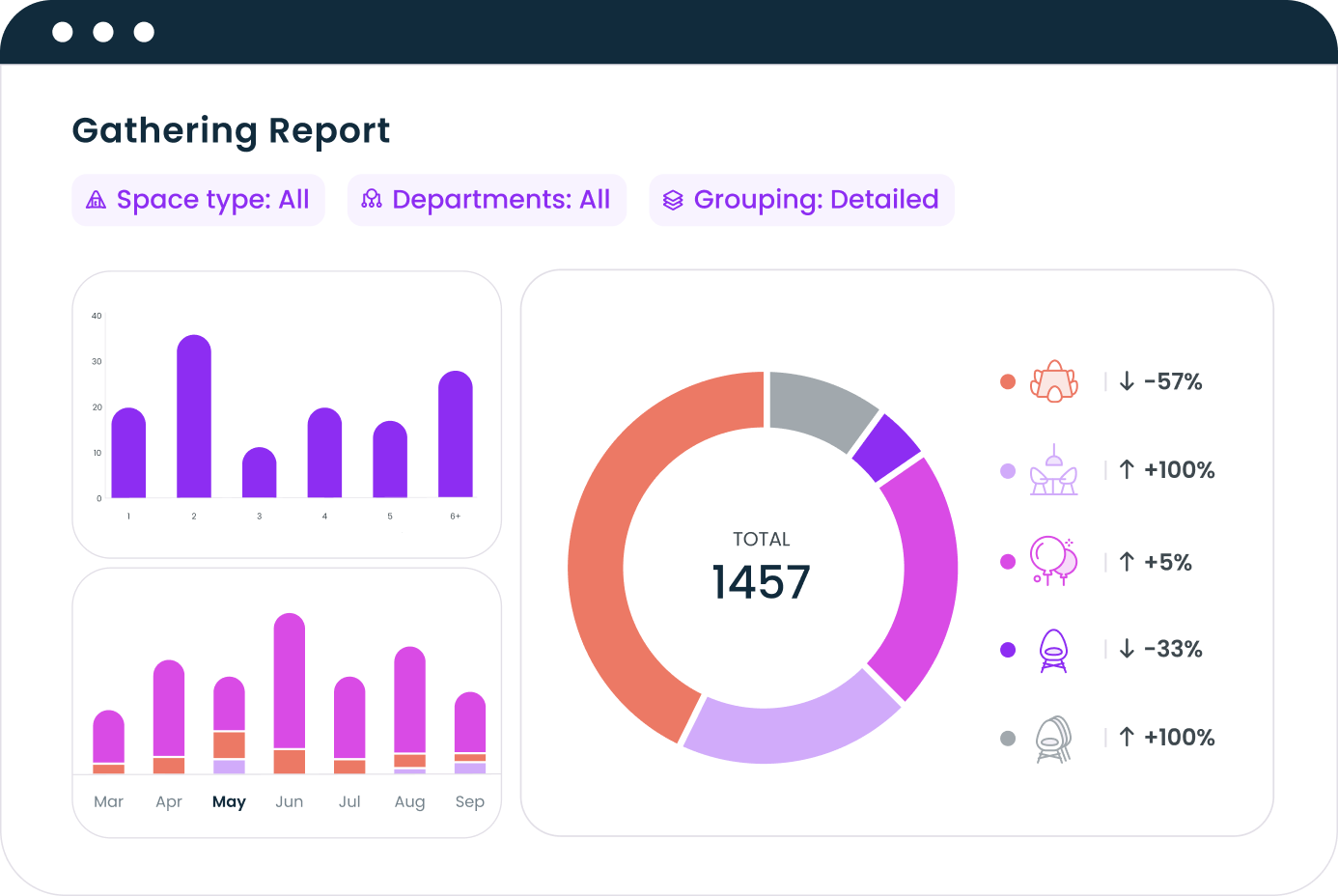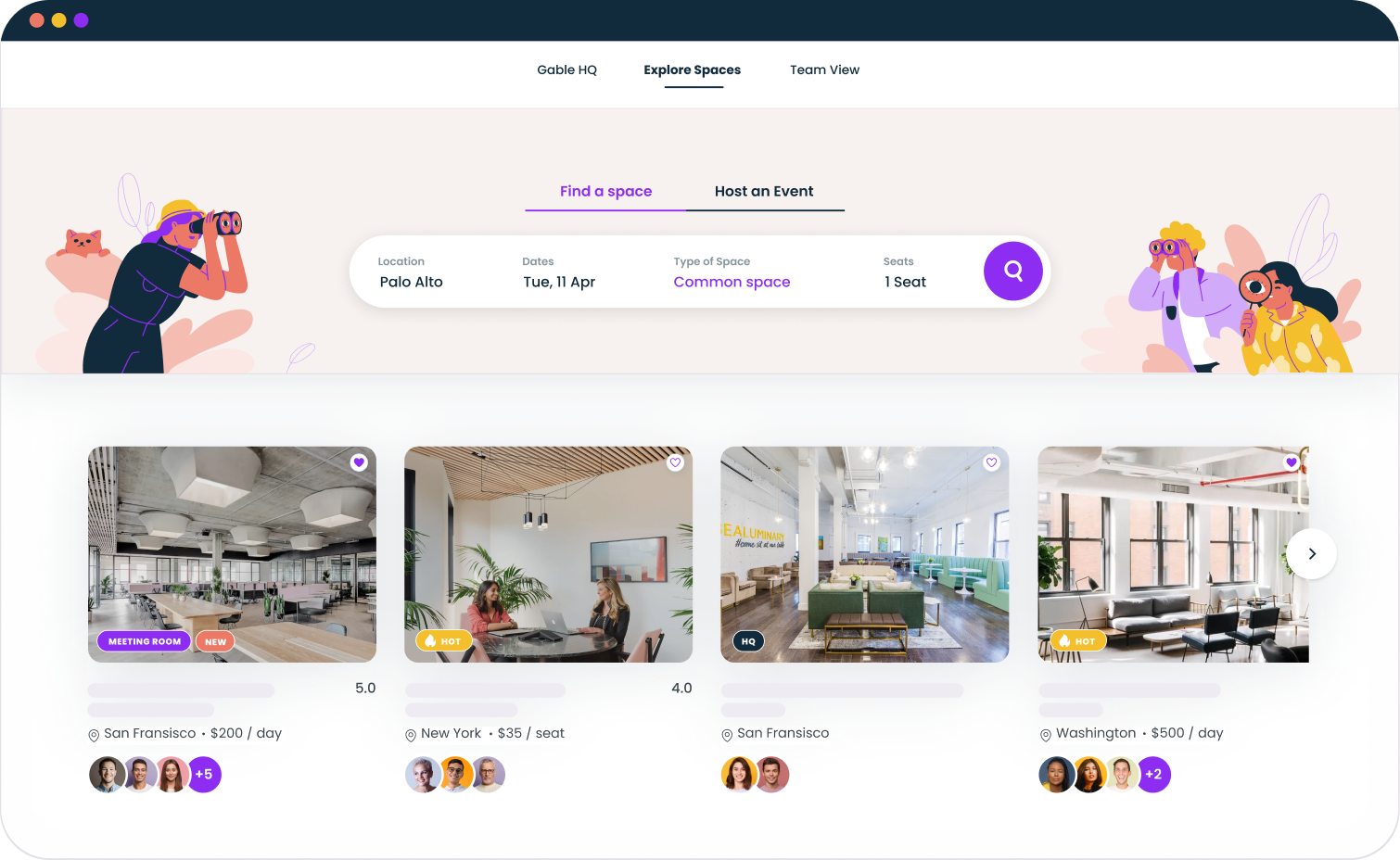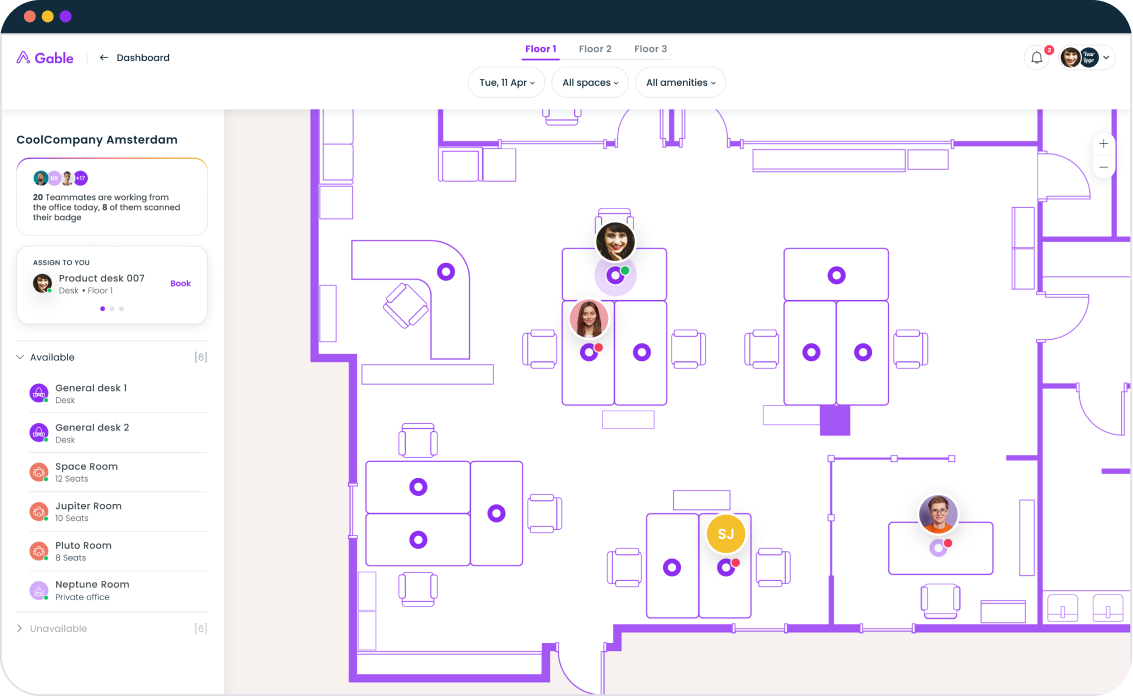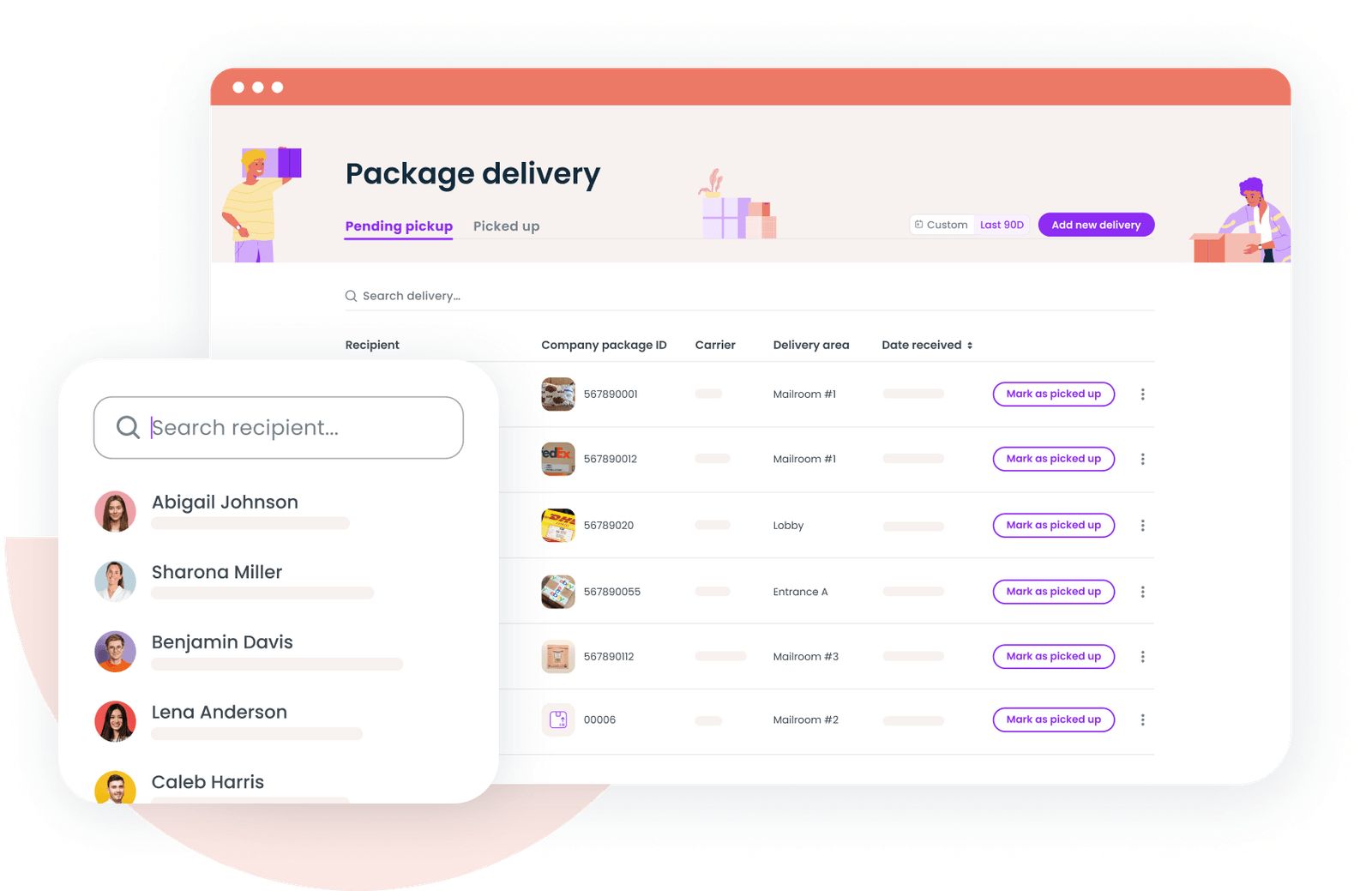In 2024, employee engagement dropped to 21% globally, matching pandemic-era lows and costing the global economy $438 billion in lost productivity. Yet, organizations that invest strategically in office technology are seeing the opposite trend: increased productivity, higher engagement, and measurable ROI.
The global smart office market is projected to reach $122.6 billion by 2032, driven by companies recognizing that technology is the foundation of competitive advantage in 2025's hybrid workplace.
This comprehensive guide explores how office technology solutions can transform your workspace from a cost center into a strategic asset.
What is office technology?
Office technology encompasses the integrated hardware, software, and systems that enable productive, efficient, and secure workplace operations. Unlike traditional office equipment that simply automated manual tasks, modern office technology creates intelligent ecosystems that adapt to how teams actually work.
Today's office technology solutions include:
Core infrastructure: High-speed networks, cloud computing platforms, and mobile-first architectures that support asynchronous work.
Smart office systems: IoT sensors, automated lighting and HVAC, and space management platforms that optimize physical environments to match modern workplace needs.
Collaboration platforms: Video conferencing, project management tools, and communication software that keep distributed teams connected
Workplace management software: Desk booking systems, visitor management, and analytics platforms that streamline operations while providing actionable insights
Security solutions: Access control systems, cybersecurity tools, and compliance software that protect people, data, and assets
The key differentiator in 2025 is integration. Rather than deploying isolated tools, successful organizations are building connected workplace ecosystems where technology components work together seamlessly.

The business case for office technology investment
Smart office technology investments deliver measurable returns that extend far beyond operational efficiency. Research indicates that for every $1 invested in smart building technology, companies can expect a $3 return over five years.
Productivity and performance gains
Despite workdays becoming 36 minutes shorter since 2022, productive time has grown by 2%, with the average productive session increasing by 20%. This productivity paradox is driven by better technology that eliminates friction and enables focused work.
Organizations implementing comprehensive office technology strategies report:
- 23% increase in employee productivity through streamlined workflows and reduced administrative overhead
- 30% reduction in time spent on routine tasks via automation and AI-powered tools
- 68% improvement in employee well-being when technology supports flexible work arrangements
Cost optimization through data
Modern office technology solutions provide unprecedented visibility into space utilization and operational efficiency. Data shows a 33% global increase in desk bookings per building year-over-year; however, bookings still peak on Tuesday through Thursday, creating "midweek mountains" of demand.
This intelligence enables facilities teams to:
- Right-size real estate footprints based on actual usage patterns
- Optimize energy consumption through smart building controls
- Reduce operational costs through predictive maintenance and automated systems
Companies that leverage workplace analytics report an average 32% reduction in underutilized office square footage, resulting in significant real estate savings. Organizations implementing comprehensive workplace experience strategies see even greater returns through improved employee satisfaction and retention.
Essential office technology categories for 2025
Smart workplace management systems
Modern workspace management goes beyond basic desk booking. Comprehensive platforms integrate space scheduling, occupancy monitoring, and employee experience tools into unified dashboards.
Key features include:
Real-time space optimization: IoT sensors track actual occupancy versus bookings, identifying ghost meetings and underutilized areas
Intelligent booking systems: AI-powered recommendations suggest optimal spaces based on meeting type, attendee preferences, and historical usage
Integrated analytics: Dashboards provide actionable insights into space utilization, employee behavior, and operational efficiency
Mobile-first experiences: Employees can easily find teammates, book meeting spaces, and navigate offices using intuitive smartphone apps.
Advanced collaboration technology
Hybrid work has transformed collaboration requirements. Teams using modern communication tools like Microsoft Teams and Slack report 32% reduction in email usage and 23% fewer meetings, with 91% of users reporting improved remote work capabilities.
Essential collaboration technologies include:
Intelligent meeting solutions: AI-powered cameras that automatically frame speakers, noise cancellation that adapts to room acoustics, and smart displays that enhance hybrid meeting experiences
Asynchronous collaboration platforms: Tools that accommodate global teams across time zones while maintaining project momentum
Digital whiteboards and brainstorming tools: Interactive displays that enable creative collaboration between in-person and remote participants
Project management software: Cloud-based platforms that provide real-time visibility into task progress and team alignment
Access control and security solutions
Modern access control systems do more than manage entry—they provide comprehensive visibility into workplace usage while enhancing security.
Next-generation security features include:
Mobile-based access control: Employees use smartphones or smartwatches to access offices, eliminating physical cards while providing audit trails
Visitor management systems: Digital registration, badge printing, and host notifications that streamline guest experiences while maintaining security
Integration capabilities: Seamless connection with HR systems, workspace booking platforms, and emergency notification tools
Real-time monitoring: Analytics that track occupancy patterns, identify unusual activity, and support compliance reporting

Learn how leading companies are creating smart workplace strategies that cut costs and boost productivity.
Read more
How smart office technology drives employee experience
Employee experience has become a critical differentiator in talent competition. A study by the University of Warwick found that happiness increased productivity by 12%, and technology plays a crucial role in enhancing workplace satisfaction.
Personalized work environments
Smart office technology enables individualized experiences that adapt to employee preferences:
Environmental controls: Smart thermostats and lighting systems that adjust based on occupancy and personal preferences
Flexible workspace access: On-demand booking of different space types—focus rooms for deep work, collaboration zones for brainstorming, social areas for informal meetings
Seamless technology integration: Single sign-on across all workplace applications, with preferences that follow employees regardless of location
Reducing workplace friction
Technology should eliminate obstacles, not create them. 95% of companies say technology issues have affected productivity levels, with problems including lagging software, poor connectivity, and trouble logging in.
Effective office technology strategies prioritize:
- Intuitive interfaces that require minimal training
- Reliable connectivity that supports high-bandwidth applications
- Integration capabilities that reduce tool switching and context loss
- Mobile optimization that accommodates diverse work styles
Implementing office technology: a strategic approach
Phase 1: assessment and planning
Successful office technology implementation starts with understanding current state and defining clear objectives.
Conduct a technology audit: Inventory existing tools, identify redundancies, and assess integration gaps
Engage stakeholders: Include IT, facilities, HR, and end-users in planning discussions to ensure comprehensive requirements gathering
Define success metrics: Establish measurable goals for productivity, employee satisfaction, cost reduction, and space utilization
Prioritize use cases: Focus on high-impact applications that address current pain points and support business objectives
Phase 2: technology selection and integration
Choose solutions that work together as a cohesive ecosystem rather than isolated tools.
Evaluate integration capabilities: Prioritize platforms that connect with existing systems and support future expansion
Consider scalability: Select technologies that can grow with your organization and adapt to changing needs
Assess vendor support: Partner with providers who offer comprehensive training, ongoing support, and regular updates
Plan for change management: Develop communication and training strategies that facilitate smooth adoption
Phase 3: deployment and optimization
Implement technology in phases to minimize disruption while maximizing learning opportunities.
Start with pilot programs: Test new technologies with enthusiastic early adopters before organization-wide rollouts
Provide comprehensive training: Ensure employees understand not just how to use new tools, but why they benefit from them
Monitor usage and outcomes: Track adoption rates, user satisfaction, and business impact to identify optimization opportunities
Iterate based on feedback: Continuously refine implementations based on user input and performance data
Office technology trends shaping 2025
Artificial intelligence integration
58% of employees now use AI tools—a 107% increase from 2022, but AI adoption requires thoughtful implementation to avoid productivity pitfalls.
Emerging AI applications in office technology include:
Predictive space planning: Algorithms that forecast optimal office layouts based on team dynamics and usage patterns
Intelligent scheduling: AI that suggests optimal meeting times and locations based on attendee preferences and availability
Automated facility management: Smart systems that predict maintenance needs and optimize energy usage
Enhanced security: Computer vision and behavioral analytics that improve threat detection while protecting privacy
Sustainability and energy efficiency
Environmental consciousness is driving demand for green office technology. Offices equipped with IoT-enabled devices, such as smart thermostats and automated lighting systems, dynamically adjust to occupancy levels, ensuring energy is used only where needed.
Sustainable technology trends include:
- Smart building controls that optimize HVAC and lighting based on real-time occupancy
- Energy monitoring systems that provide granular visibility into consumption patterns
- Carbon footprint tracking that supports corporate sustainability goals
- Waste reduction tools that minimize paper usage and optimize resource allocation
Human-centered design
The future of office technology prioritizes human needs over technical capabilities. Technology is becoming more responsive to human intent and behavior, shifting from human replacement to augmentation—enabling more natural, productive collaboration between people and intelligent systems.
Design principles include:
Intuitive interfaces: Technology that adapts to natural human behaviors rather than requiring extensive training
Contextual awareness: Systems that understand situational needs and provide relevant recommendations
Emotional intelligence: AI that recognizes stress signals and suggests appropriate interventions
Accessibility focus: Universal design that accommodates diverse abilities and work styles
Measuring office technology ROI
Key performance indicators
Track these metrics to demonstrate technology value:
Productivity metrics:
- Time saved on administrative tasks
- Reduction in meeting preparation time
- Improvement in project completion rates
Space utilization metrics:
- Occupancy rates by area and time
- Booking-to-usage ratios
- Cost per square foot optimization
Employee experience metrics:
- Technology satisfaction scores
- Workplace net promoter scores
- Retention rates in technology-enabled roles
Operational efficiency metrics:
- Energy consumption reduction
- Maintenance cost decreases
- Security incident prevention
Building a business case
Present office technology investments as strategic initiatives that drive multiple business outcomes:
Revenue impact: Demonstrate how improved productivity and collaboration capabilities support growth objectives
Cost avoidance: Quantify savings from optimized space usage, reduced energy consumption, and prevented security incidents
Risk mitigation: Show how technology investments reduce compliance risks and business continuity threats
Competitive advantage: Highlight how modern workplace technology supports talent attraction and retention
Getting started with office technology transformation
Immediate actions
Begin your office technology journey with these foundational steps:
- Audit current technology stack to identify gaps and redundancies
- Survey employees about workplace pain points and technology preferences
- Benchmark space utilization to understand optimization opportunities
- Research integration possibilities between existing and potential new systems
Building momentum
Create early wins that demonstrate technology value:
- Implement simple solutions first, such as mobile-friendly booking systems or visitor management tools
- Measure and communicate results to build support for larger investments
- Engage technology champions who can advocate for broader adoption
- Plan for scalability to ensure initial investments support long-term growth

Common office technology challenges and solutions
Integration complexity
Many organizations struggle with technology silos that create inefficient workflows and data gaps.
Challenge: Employees must navigate multiple disconnected systems for basic tasks like booking meetings, accessing buildings, and collaborating with teammates.
Solution: Prioritize platforms that offer robust API integrations and pre-built connectors to common workplace tools. Look for vendors committed to open ecosystems rather than proprietary lock-in.
Change management resistance
Technology adoption often fails due to inadequate change management rather than technical limitations.
Challenge: Employees resist new systems that disrupt familiar workflows or require extensive retraining.
Solution: Involve end-users in technology selection processes, provide comprehensive training programs, and demonstrate clear personal benefits rather than just organizational gains. Successful organizations develop comprehensive workplace strategies that address both technology and culture change.
Security and compliance concerns
Modern office technology introduces new security vectors that require careful management.
Challenge: Cloud-based systems, mobile access, and IoT sensors create potential vulnerabilities while handling sensitive data.
Solution: Implement zero-trust security frameworks, ensure vendor compliance with relevant regulations, and provide ongoing security training for all users. Learn more about comprehensive office security strategies for 2025.
The future of office technology
Emerging technologies on the horizon
Several technological developments will significantly impact workplace management in the coming years:
Extended reality (XR): Virtual and augmented reality tools will enable immersive collaboration experiences that bridge physical and digital workspaces
Advanced IoT networks: 5G and Wi-Fi 6 will support more sophisticated sensor networks that provide granular insights into workplace usage and environmental conditions
Quantum computing applications: While still emerging, quantum technologies may eventually revolutionize complex optimization problems in space planning and resource allocation
Biometric personalization: Privacy-conscious biometric systems could enable automatically customized environments based on individual presence and preferences
Preparing for continuous evolution
Office technology will continue evolving rapidly. Organizations should:
- Build flexible technology architectures that accommodate future innovations
- Develop internal capabilities for evaluating and implementing new solutions
- Establish vendor relationships with companies committed to ongoing innovation
- Create feedback loops that inform technology roadmap decisions
Discover how workplace leaders are using data-driven insights to optimize their office environments in 2025.
Learn more
The evolution of office technology represents more than a trend—it's a fundamental shift toward workplaces that actively support human potential rather than simply housing employees. Organizations that embrace this transformation strategically will create competitive advantages through improved productivity, enhanced employee experiences, and optimized operational efficiency.
Success requires more than selecting the right tools. It demands thoughtful integration, comprehensive change management, and continuous optimization based on real workplace data. By focusing on human-centered design principles and measurable business outcomes, office technology becomes a strategic asset that drives sustainable growth.
The future workplace won't be defined by the amount of technology it contains, but by how seamlessly that technology enables people to do their best work. Start building that future today.

FAQ: Office technology
What is the most important office technology for hybrid teams?
The most critical technology for hybrid teams is an integrated workplace management platform that combines space booking, collaboration tools, and analytics. This enables seamless coordination between remote and in-office workers while providing insights for optimization.
How much should companies budget for office technology?
Office technology investments typically range from 2-5% of total facility costs, but ROI-focused implementations often pay for themselves within 12-18 months through productivity gains and space optimization. Focus on measurable outcomes rather than arbitrary budget percentages.
What office technology trends should we prioritize in 2025?
Prioritize AI-enhanced analytics, mobile-first experiences, and sustainability-focused solutions. These trends address the most pressing workplace challenges while providing competitive advantages in talent attraction and operational efficiency.
How do we measure office technology success?
Track productivity metrics (time saved, task completion rates), space utilization data (occupancy rates, booking efficiency), employee satisfaction scores, and cost reduction achievements. Establish baseline measurements before implementation to demonstrate clear value.
What are the biggest office technology implementation mistakes?
Common mistakes include choosing disconnected point solutions, inadequate change management, insufficient training programs, and lack of clear success metrics. Successful implementations prioritize integration, user adoption, and measurable business outcomes.
Gable integrates space scheduling, analytics, and employee experience into a single, powerful solution.
Get a demo





.svg)





.svg)










.svg)














